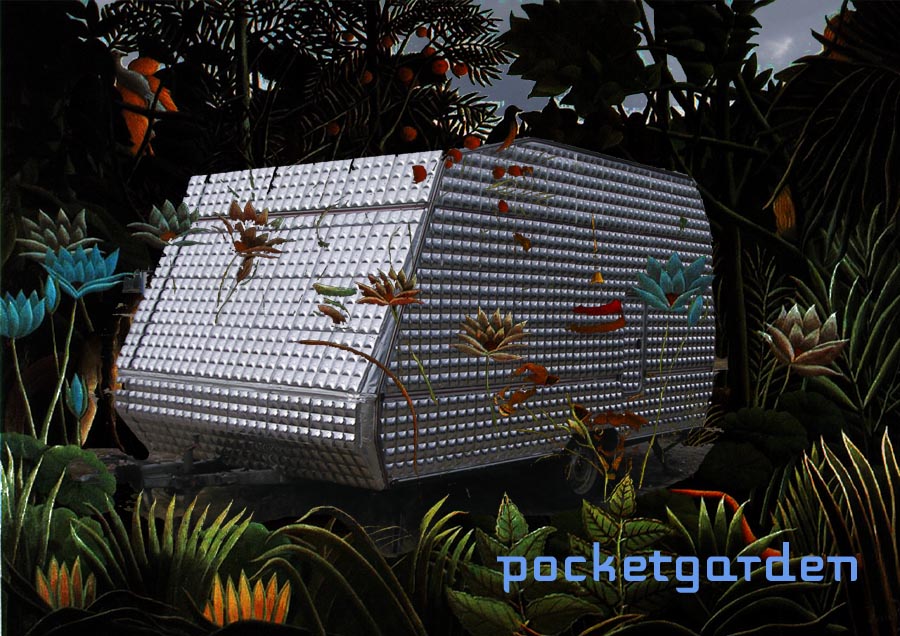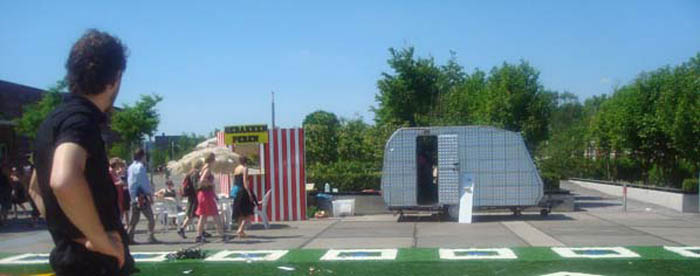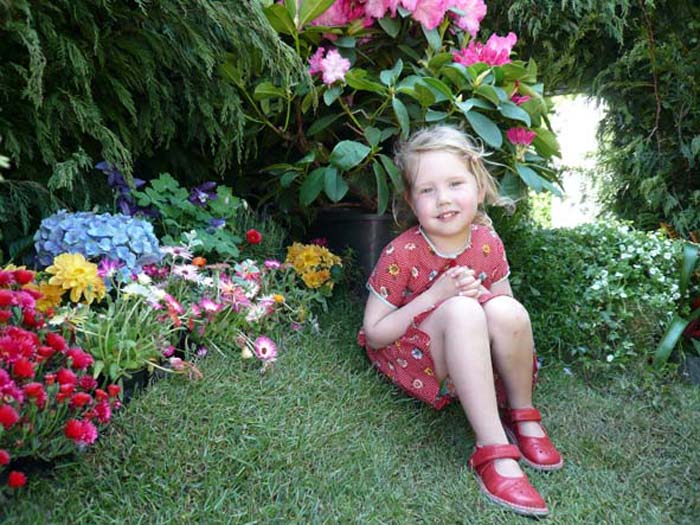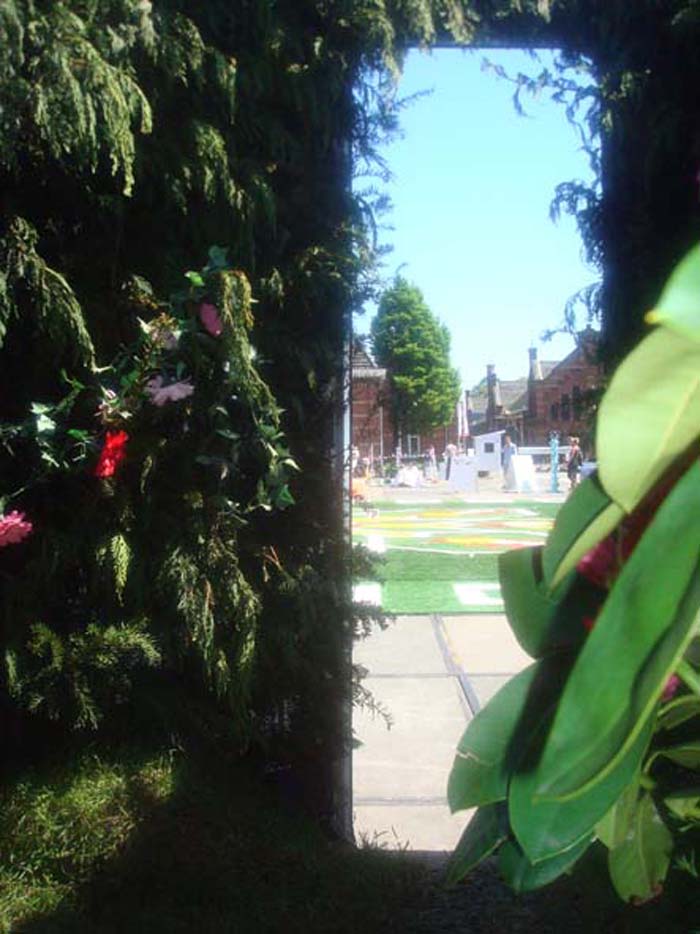We create interactive art works that invite the public to be curious, to operate the work or to enter it. MakeFactory wants to wonder people, invite them to contemplate and to think about the other sides of normality. What do we think is true? and what is not?
Works
Ferengi performance Kunsthal Rotterdam
Performance Centre Pompidou Paris
In January 2023, Dienke Groenhout performed with a number of her ‘Ferengi’ costumes at the Center Pompidou in Paris in the series ‘Uninvited’.
Sans papier
Rollie Bollie


Binnerlijk en Buiterlijk
Ferengi (stranger)
 The exhibition is showing costumes in a broad sense of the word, meaning: you can wear them but they are much more than just a decorative function for the body.
They communicate the identity of their makers. Dienke Groenhout, the initiator of this project, made three of the costumes. The other costumes are made by Tamrat Gezahegne from Ethiopia, Gígja Reynisdóttir from Iceland and Valerie Asiimwe Amani from Tanzania, all artists that Groenhout met during her travels. Videos of the performances in which the costumes are being worn provide insight into the functioning of the costume as an extension of the identity.
The artists wonder what an identity actually is, which part of it is just a coincidence, which part is allocated and which part is a personal achievement. According to the Ferengi project, identities are located in a symbolic time and space in an imaginary geography. Fictional, so to speak. Partly by oneself and to a large extent by a group, an entire society or a political idea.
Please also visit the site of Museum Villa Mondriaan.
The exhibition is showing costumes in a broad sense of the word, meaning: you can wear them but they are much more than just a decorative function for the body.
They communicate the identity of their makers. Dienke Groenhout, the initiator of this project, made three of the costumes. The other costumes are made by Tamrat Gezahegne from Ethiopia, Gígja Reynisdóttir from Iceland and Valerie Asiimwe Amani from Tanzania, all artists that Groenhout met during her travels. Videos of the performances in which the costumes are being worn provide insight into the functioning of the costume as an extension of the identity.
The artists wonder what an identity actually is, which part of it is just a coincidence, which part is allocated and which part is a personal achievement. According to the Ferengi project, identities are located in a symbolic time and space in an imaginary geography. Fictional, so to speak. Partly by oneself and to a large extent by a group, an entire society or a political idea.
Please also visit the site of Museum Villa Mondriaan.

Ferengi

When we arive to new places we try to connect immediately to what we know. We try to give the strange a familiarity. Do we need a similarity to connect? While I traveled many continents I was always categorized immediately and given many names even though I was there for the first time. I wondered what will happen when there is no category for me yet and no context to refer to? How do people face the strange? The suit was made with the help of Gennet Hussein, presented at Guramayne Art Centre and now in possession of The National Theatre, Addis Abeba.

Floating Home

“Staying is not the same as coming back”
“How did we get here?” was the theme of this international exhibition. The question aimed to acdress our identity seen in a global perspective. MakeFactory created the performance installation ‘Floating home’. A landscape of paper furniture that seems to have fallen apart. People can enter the deranged room that invites them to a moment of reflection. Voices are whispering questions to wonder about. In cooperation with the dancers of Muda Africa, who created a special performance for this work. Sponsored by Safmarine.



Garden Stories

In cooperation with the theatre group Barefeet Theatre, whose core business is making theatre with street kids and vulnerable youth, MakeFactory made this magazine-like book. Zambia has more then 70 spoken languages. To be able to understand each other, the Zambian government has decided for English to be the official language. Of course language transfers culture more then we are aware of. The Zambian youth cannot relate to the English stories in the nearby library. Therefore Barefeet and MakeFactory thought it urgent to give local life and local people a stage and a place in the library. The book contains local history, urban legends and traditional stories from the neighbourhood Garden Compound. The editorial team was formed by youth from the hood, and an art and drawing team was formed by the children of Kafwa Drop In Centre and the art group of the library.
View here the entire book.
Pecheur de Plastic

2019 Centre culturel Le Chateau
Saint Louis, Senegal
Pecheur de Plastic was a participative performance connecting the fishermen’s traditional rituals of hauling in the nets to modern dance. The dancing school le Chateau culturel in St Louis is situated in the middle of the fishermen’s quarter on a peninsula that is slowly being eaten on one side by the sea and on the other, the river side, by enormous amounts of plastic pollution. The performance was participatory. In invited the public to join in the movements of the dance and to collect plastics together with the dancers while they carried the nets through the streets.
Some gorgeous pictures made by Abdoulaye Toure in sequence of the performance:
Stad Vol Verhalen
7 Houses










Living Doll






Traffic Jam!
 “Around 63.000 people rush themselves every morning in their cars to the highway to join the line and then stand still.
They rush themselves, and go nowhere.
The defenition of a highway is ‘a conflictfree road for fast motorised traffic that doesn’t have to stop or wait at junctions’.
Every morning though, the highway transforms into a gigantic roadblock.
Discription:
‘Traffic Jam!’ is a 4 km long installation that resambles a ‘normal’ morning rushhour in the Netherlands, on scale.
The installation consists out of 80.000 white porcelan cars and lorries like we see them every day driving on the Dutch roads. Or actually standing still on the Dutch roads.
The installation ‘Traffic Jam!’ means to give the audience an insight on the scale of the traffic jam problem the Netherlands has. Where other countries have usually traffic jam problems around the big cities, the Netherlands is practicly all jammed up. Because the cities are so close together, it can happen that the entire route from one to another is filled with still standing cars.
If you want to build an entire morning rushour on, let’s say, a scale of 1:87 (standard scaletrain), you will see a ‘Droste effect’ appearing. The installation itself becomes this long that it has the size of one pretty large jam.
In order to see the whole amount of cars at once there needs to be made a special construction of ‘scaleroads’ that turns and twists around itself and can be connected on walls and ceilings, and should maybe even go out of the building and come in again through the back to fit the 4 kilometers.
The installation will be supported by usefull, interesting or bizarre information about the traffic jam problem. Ranging from the economical loss for employers per traffic jam minute, to irritation by the traffic jam drivers, and from how much money is being made with traffic jam, to how it can deliver the traffic jam drivers a moment of relaxation and time for oneself.
File was shown (in parts) at Art Aalsmeer, Otto and at Boxxshop, Lloyd Hotel, Amsterdam.
“Around 63.000 people rush themselves every morning in their cars to the highway to join the line and then stand still.
They rush themselves, and go nowhere.
The defenition of a highway is ‘a conflictfree road for fast motorised traffic that doesn’t have to stop or wait at junctions’.
Every morning though, the highway transforms into a gigantic roadblock.
Discription:
‘Traffic Jam!’ is a 4 km long installation that resambles a ‘normal’ morning rushhour in the Netherlands, on scale.
The installation consists out of 80.000 white porcelan cars and lorries like we see them every day driving on the Dutch roads. Or actually standing still on the Dutch roads.
The installation ‘Traffic Jam!’ means to give the audience an insight on the scale of the traffic jam problem the Netherlands has. Where other countries have usually traffic jam problems around the big cities, the Netherlands is practicly all jammed up. Because the cities are so close together, it can happen that the entire route from one to another is filled with still standing cars.
If you want to build an entire morning rushour on, let’s say, a scale of 1:87 (standard scaletrain), you will see a ‘Droste effect’ appearing. The installation itself becomes this long that it has the size of one pretty large jam.
In order to see the whole amount of cars at once there needs to be made a special construction of ‘scaleroads’ that turns and twists around itself and can be connected on walls and ceilings, and should maybe even go out of the building and come in again through the back to fit the 4 kilometers.
The installation will be supported by usefull, interesting or bizarre information about the traffic jam problem. Ranging from the economical loss for employers per traffic jam minute, to irritation by the traffic jam drivers, and from how much money is being made with traffic jam, to how it can deliver the traffic jam drivers a moment of relaxation and time for oneself.
File was shown (in parts) at Art Aalsmeer, Otto and at Boxxshop, Lloyd Hotel, Amsterdam.


Small Worlds
Pocket Garden
Peephouses
 Social media is hot. Twitter, Facebook, Instagram… If you do it well you can present an entire new avatar of yourself on each one of them. But does it make the world more social?
In the Peephouses you can check out one’s profile through the camera’s en tv’s first. Like what you see ? You can directly meet ‘live’.
Peephouses was made in assignment of Pluk de Nacht 2010, Outdoor filmfestival on the pear in ‘het IJ’, Amsterdam.
Twelve wooden boxes are grouping together like the buildings of a small town. In six of them there are large looking holes. If you peek in them you will see somebody’s face really close by. Is this me? you wonder. Is this being filmed?
But soon enough you will find out that it is live and that face, might be the person standing next to you peeking in that other hole!
Social media is hot. Twitter, Facebook, Instagram… If you do it well you can present an entire new avatar of yourself on each one of them. But does it make the world more social?
In the Peephouses you can check out one’s profile through the camera’s en tv’s first. Like what you see ? You can directly meet ‘live’.
Peephouses was made in assignment of Pluk de Nacht 2010, Outdoor filmfestival on the pear in ‘het IJ’, Amsterdam.
Twelve wooden boxes are grouping together like the buildings of a small town. In six of them there are large looking holes. If you peek in them you will see somebody’s face really close by. Is this me? you wonder. Is this being filmed?
But soon enough you will find out that it is live and that face, might be the person standing next to you peeking in that other hole!
This paper
Stadsarchief
First Art Kit
Replaceable or Irreplaceable that’s the question
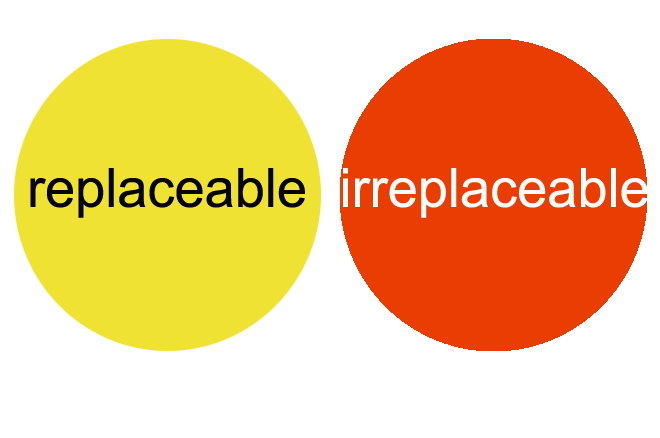 Replaceables is a campaigning project about the replaceability of workers. Someone I know worked at a big company. He told me he was at a meeting where a dozen of people would be told that they were to get fired. It was the third meeting like that in three years. In the three years he had worked there he had also outlived three bosses. At the meeting some people wore yellow badges and some wore red badges. The yellows were the replaceables and the red ones didn’t have much to fear, they were the irreplaceables. I was shocked when he told me this and asked him what color he had. He told me his team didn’t wear any colors and then he told me he made the whole story up to check if I was listening. It is not far besides the real world, though, and together we set up this campaign. We made the actual badges and had the workers choose what they would wear: red or yellow….?
Replaceables is a campaigning project about the replaceability of workers. Someone I know worked at a big company. He told me he was at a meeting where a dozen of people would be told that they were to get fired. It was the third meeting like that in three years. In the three years he had worked there he had also outlived three bosses. At the meeting some people wore yellow badges and some wore red badges. The yellows were the replaceables and the red ones didn’t have much to fear, they were the irreplaceables. I was shocked when he told me this and asked him what color he had. He told me his team didn’t wear any colors and then he told me he made the whole story up to check if I was listening. It is not far besides the real world, though, and together we set up this campaign. We made the actual badges and had the workers choose what they would wear: red or yellow….?










































